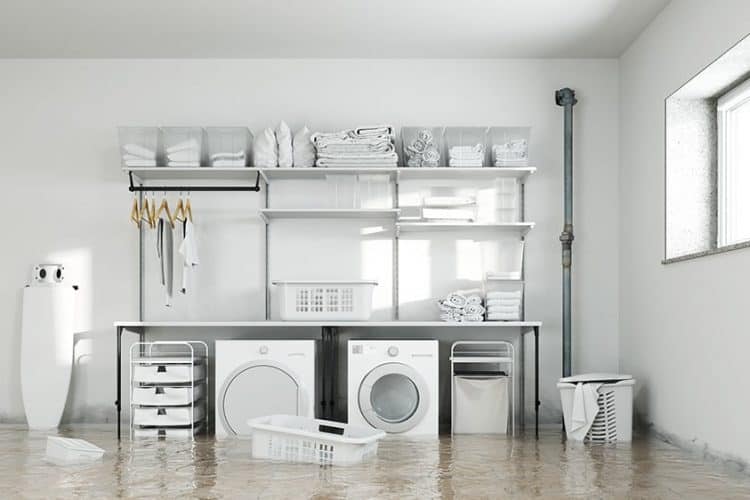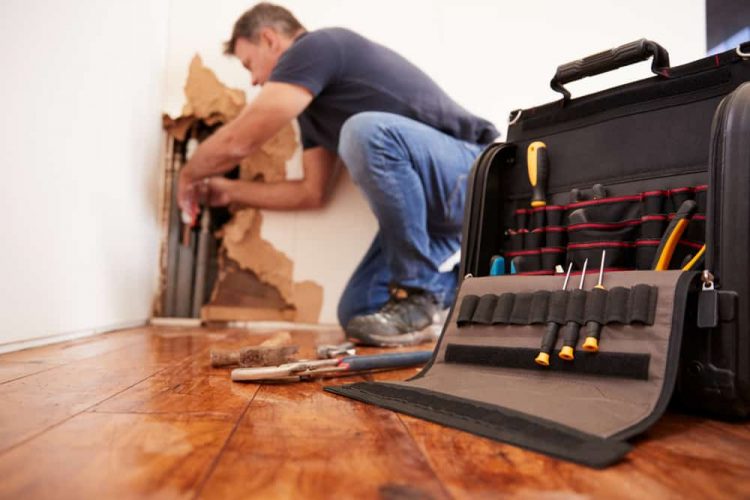
Knowing what to do after a house fire is important because even after the flames have been extinguished, the acidic soot, smoke damage, and odors from a fire begin to compromise your property immediately.
According to the National Fire Protection Association (NFPA), there are 358,000 structural house fires every year. Fire and smoke are two elements that can cause extensive property damage.
Stay out of your fire-damaged home until the fire authorities tell you it’s safe to re-enter. In the meantime, there are some key people you need to contact.

-
1. Contact Key People
Your Insurance Company
There are four things you need to address when calling the insurance company:
- Your claim: Start the claims process immediately because restoring a fire-damaged house can take weeks or months, depending on the extent of the damage.
- Security: Ask about safeguarding your property. You may need to board up windows or erect a temporary fence for security.
- Restoration services: Inquire about a professional fire restoration company because you cannot manage the restoration on your own.
- Policy coverage: Ask what your policy covers for temporary accommodations and expenses.
Your Mortgage Provider
You must make mortgage payments on your home, even after a fire event. However, you may be able to get a forbearance, which allows you to stop making payments or make only partial payments for an agreed-upon time.
Your Fire Damage Restoration Company
Contact a fire damage restoration company and connect them with your insurance company. You should not take on fire and smoke damage cleaning and restoration on your own.
Employers and Schools
Notify employers and schools if there will be absences from either while you get settled with new accommodations.
2. Secure Accommodations
Decide where you will stay before returning to your home. If you incur out-of-pocket expenses related to your temporary accommodations, such as a hotel, keep your receipts. In fact, as you accumulate any expenses, keep the receipts because, in some policies, there is a term called Additional Living Expenses (ALE).
This refers to coverage for a homeowner, condominium owner, or renter that covers the additional costs of living incurred by a policyholder should they be temporarily displaced from their place of residence.
3. Secure Your Property
After making these important contacts, the next step is addressing your property. Depending on the extent of damage, many of the steps to secure fire-damaged property, such as tarping a roof, boarding up windows and doors, or addressing any holes to prevent weather damage, need to be done by a professional before you get the go-ahead to re-enter from authorities.
4. Manage Utilities
Fire authorities will evaluate the utilities (water, electricity, gas, and heat) to determine if they are safe to use or if they need to be disconnected. If a utility is disconnected, you must contact the utility company to have the apparatus checked for proper working order or arrange any necessary repairs to reinstate service. Do not reconnect utilities yourself.
5. Salvage Items
When it’s been deemed safe by authorities to re-enter your home, there are several steps to take. They include:
- Locate and collect key items to take with you, such as medication, personal aids (eyeglasses, hearing aids, etc.), and valuable and personal belongings.
- Perform a damage assessment and identify salvageable items
- Document everything
A key element to remember is to document everything you do after a fire. This includes expenses you incur and items that cannot be salvaged. The restoration company will do the same. This will aid with the claims process.
The Role of Damage Restoration Services
Restoring and cleaning your home after a fire is not a job to do on your own. Soot, smoke damage, and odors need to be handled by professionals with the proper gear, cleaning solutions, and processes. Not only is this work dangerous, but you can further damage your property if you don’t perform this work appropriately.
1-800 WATER DAMAGE technicians are trained to handle smoke damage restoration. Once on-site, we will take the following action:
- Assess the damage: We carefully survey the property to evaluate the extent of the damage, including assessing damage to structural elements, salvaging items, and determining the cleaning processes.
- Create a plan: Working with your insurance company, we create a plan to address damage and how to clean most efficiently.
- Remove debris: We remove damaged debris, including drywall, ceiling tiles, flooring, and other items. If furniture, appliances, and other personal belongings have been deemed salvageable, we will set them aside and protect them for the necessary next steps.
- Clean Residue Our technicians clean and remove soot and smoke residue from surfaces in every room.
- Remove Odors: An important part of the specialty cleaning process involves removing smoke odors.
Depending on the extent of the damage, this process can take days, weeks, or even months to complete.
Contact 1-800 WATER DAMAGE
You can reach us by calling 800-928-3732 or by completing our online form. We are available 24 hours a day, seven days a week, 365 days a year, to respond to your need for our fire damage remediation services.
-
Request A Quote Or Service Today
What Our Customers Say
How May We Help You? Request Service
Latest News
The Latest News, Restoration Tips & More


